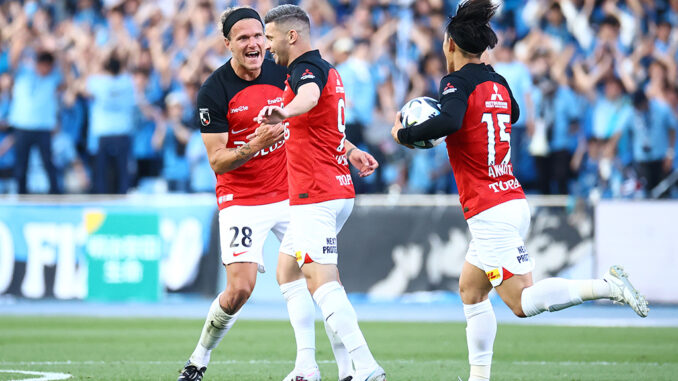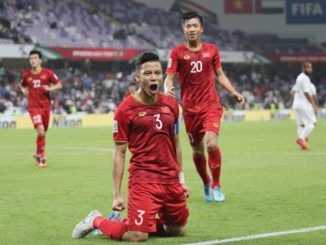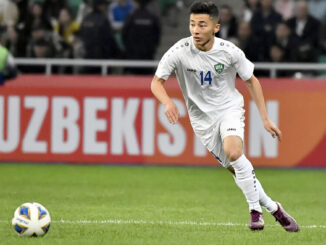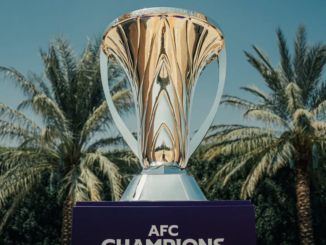
More than a year after the tournament began and almost 18 months after they qualified, Urawa Red Diamonds will finally, once again, stride into the centre of the biggest stage in Asian club football.
In the same way that some global brands are far more successful and popular away from their home base Urawa’s reputation across Asia is a curious case of a modest domestic team being framed as a continental powerhouse by virtue of what amounts to, essentially, a series of impressive cup runs.
Even though it’s, by this point, well understood it bears repeating that Urawa have won twice the number of Champions League titles than they have domestic league ones.
Only once in the 30-year history of the J.League have Urawa claimed the title and that was way back in 2006; in that same time frame Al Hilal have won the Saudi league ten times.
If Urawa prevail over the next week it’ll be an astonishing three times the number of continental titles to local league ones.
That’s an achievement that will eclipse Foster’s international reputation as Australia’s beer of choice.
They’re also perhaps grateful that the tournament was dragged into a fourteenth month as it’s allowed them to reframe their side and approach under an impressive new coach.
If the final had’ve been played in the usual end of the year time frame it would have been unthinkable that a spluttering Reds side could have seen off Al Hilal and now, whilst still the outsiders, Reds have a genuine shot of taking the crown from the jewel of West Asian football.
So what changed?
In one sense not that much but in another, a whole lot.
In terms of personnel there was very little off-season activity from a side that stumbled into a ninth-placed league finish barely four months ago.
Indeed, of the likely XI that will start at the King Fahd Stadium tomorrow the only additions are the loan return of 36-year-old forward Shinzo Koroki and the arrival of central defender Marius Hoibraten from the Norwegian league.
Unusually for a Reds side that has historically had genuine financial muscle there’s little flair about the way the club went about preparing for another final; their third in a decade and a half.
There are no flashy players or headline arrivals in the side, the foreign signings come from nations not usually associated with Japanese football and there’s not a single current international amongst the group.
Yet domestically they’re in a rich vein of form, undefeated in their past eleven matches in all competitions, sitting fourth and just two points off the J.League summit.
In a similar way that the club approached off-season player movement, their new man in charge, Polish coach Maciej Skorza, also arrived with little fanfare.
For far too long, Reds have been the club where coaching didacticism has gone to die.
It’s refreshing then to see or hear far less of Skorza – a man who arrives with an eye-catching record of success in his homeland – than we have with previous coaches at the club.
There have been no grand philosophical proclamations, talks of projects, tradition, time or patience and rather there has been a functional approach to improving the players already in place.
This is what good coaching does.
In barely a handful of months, Skorza has taken the framework of a good side that struggled to perform and turned them into a team that stands a realistic chance to topple Asia’s elite.
In the transformation too there has been nothing overly dramatic, rather a series of positional and structural moves that have sharpened the existing quality.
In terms of personnel and shape the moves have been largely peripheral, a standard 4-2-3-1 in possession and 4-4-2 out of it where each player has a clearly defined role.
The flirtation between the present and the future in goal was sorted decisively in favour of Shusaku Nishikawa, Hoibraten’s arrival has provided a reliable foil for the consistently impressive Alexander Scholz, Atsuki Ito and the wily veteran Ken Iwao have become more assured in their positioning in and out of possession, a fluid midfield three of Tomoaki Okubo, Yoshio Koizumi and Takahiro Sekine provide technical quality and movement and Koroki still looks remarkably sharp for a forward of his age.
Overall, the team looks far sharper and fitter than they ever did last year, their movement is more precise and dynamic and the structure in building out from the back is clear and concise.
Out of possession, their pressing triggers are being better read and executed and the work, especially, of Koizumi in closing down space and winning the ball high up the pitch has been impressive.
The one curious move was the loan departure of Kasper Junker – the J.League’s most clinical striker – and whilst Koroki is still a good finisher he doesn’t offer the all-round quality that the Dane does and there’s a sense that if they had kept Junker they would’ve been a far more dangerous side.
Generally though, this is an impressive Urawa side that you feel could be even more effective in a year or two under Skorza. But, in a short period of time, he’s fashioned them into a solid team both in defence and attack and for now that might just be enough.
Rather than making very public and grand proclamations, what Skorza has done is strip things back and simplify the individual and overall tactical approach and it’s clearly working.
Are they the best team in Asia?
No.
Are they Japan’s best team?
No.
They are clearly on the right course though and they might just push Al Hilal closer than many expect this year and be an even more dangerous side a couple of years down the track.
Photo: twitter/REDSOFFICIAL
Listen to our preview of the AFC Champions League Final on The Asian Game Podcast




